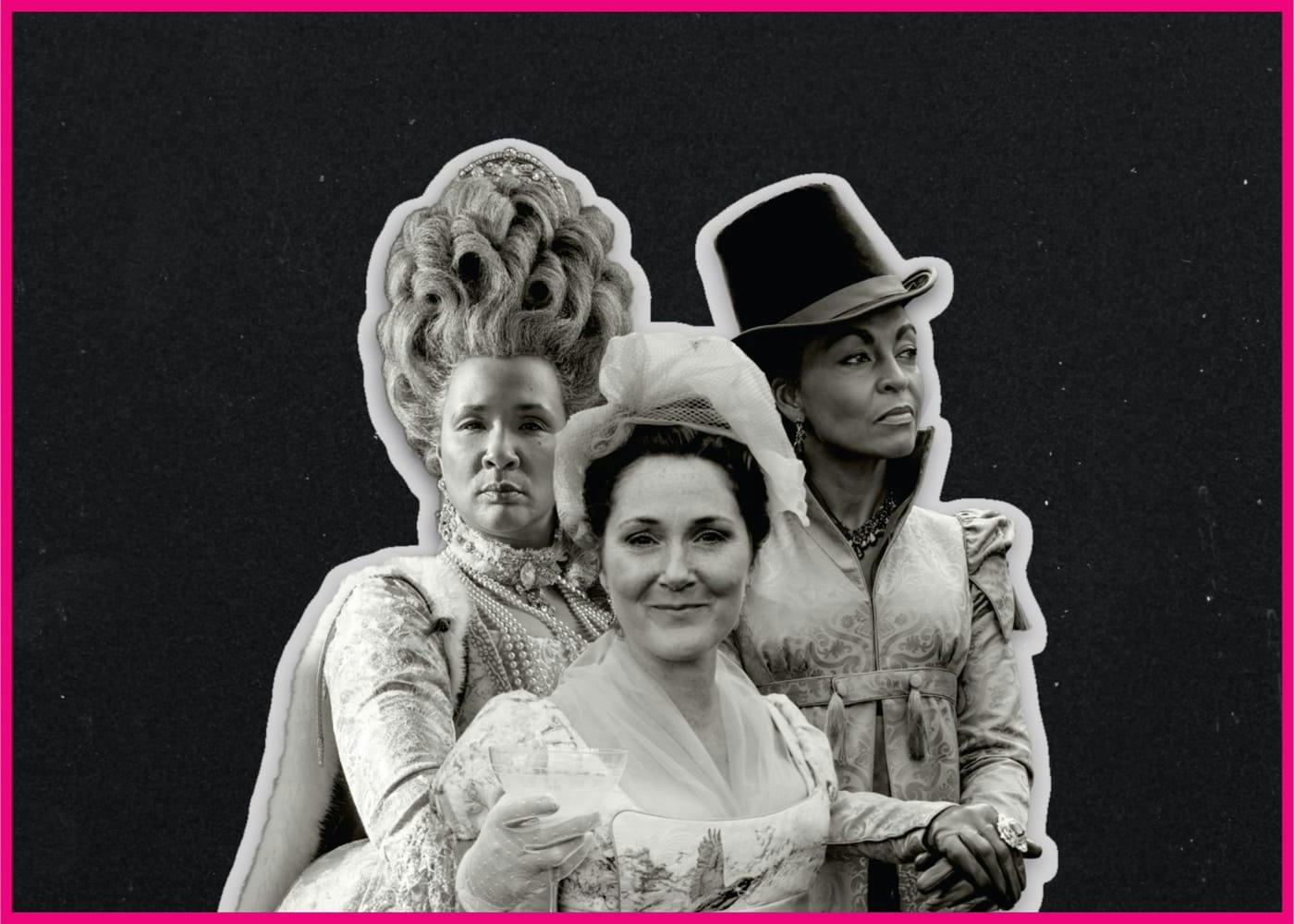The women of Shonda Rhimes’s smash hit Bridgerton teach us about power, sex, marriage, and feminism in Regency England.
In the world of Bridgerton, the institution of marriage reigns supreme, but the characters are woefully underprepared for what the exchanging of vows actually means. Where knowledge about intimacy should be, they instead hold overly romanticized ideas about courtship and over-simplified visions of gender — or so it appears. As the story unfolds, it’s clear that there’s more to this community of ball-goers than meets the eye. And there’s especially more to the women.
When we first meet her, Daphne knows next to nothing about sex (and intimacy in general). Her purity, in the context of her universe, is part of her charm; upon being debuted to Queen Charlotte — the white plumes of Daphne’s feathery headdress waving gently around her trembling, pale skin — the young Ms. Bridgerton is deemed “flawless, my dear.” She’s like a newborn fawn: Everything feels exciting and full of possibility.

Daphne Bridgerton (Phoebe Dynevor) and Queen Charlotte (Golda Rosheuvel)
Bridgerton’s Queen Charlotte presides with a kind of omnipotent grace. Based on the real Queen Charlotte, who may have been mixed-race, this character’s presence and power defy the norms of Regency England; here in the world of Bridgerton, race does not preclude status, though gender does. There’s a king, somewhere, but in the tradition of young girls making their debuts in court, it’s the queen’s word that deems Daphne “the diamond” of the season. Yet Daphne knows so little about what’s in store for her.
As for what Daphne does know? That she feels attracted to one duke — Simon Basset. Simon and Daphne make an odd couple. The duke knows how to have sex but not how to love; Daphne knows how to love but not how to have sex. Together, they get, well, an awfully rocky start to a rushed marriage, saved only by an animalistic physical attraction that won’t quit. In fact, it’s their ongoing, bottomless want for each other that motivates them to keep trying to save the relationship, even when things take several dark twists.
Daphne’s navigation of her newfound sexuality, foregrounded by the courtship scene of Regency London, makes for a cringingly funny storyline, where Daphne’s sexual awakening is at once painful, wondrous, and deeply relatable. Her sexual naïvete is a symptom of the times, and it also plays into the uneven power dynamic in her relationship with Simon, whose sexual knowledge gives him more power than Daphne.
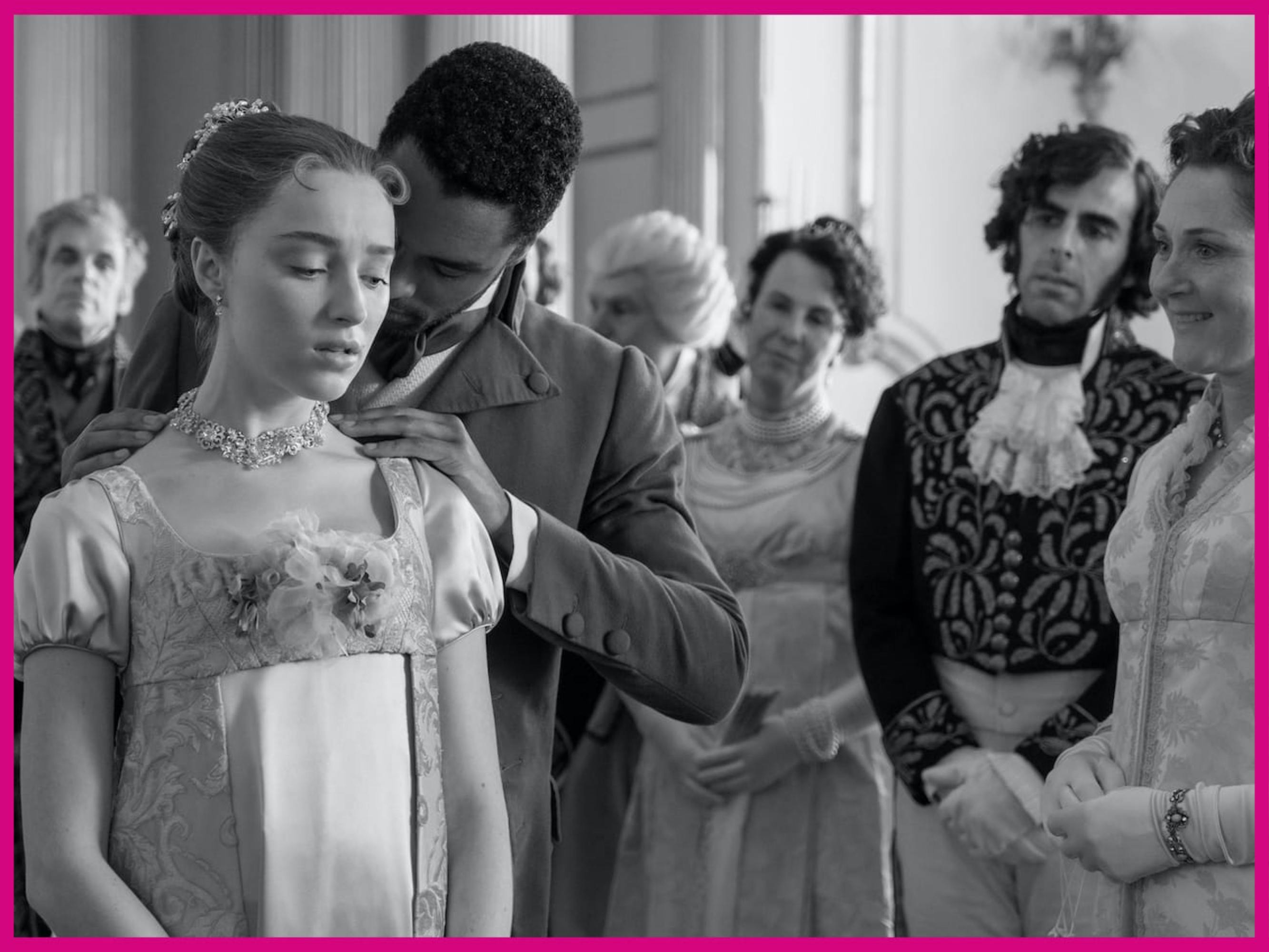
Daphne Bridgerton (Phoebe Dynevor), Simon Basset (Regé-Jean Page) and Lady Violet Bridgerton (Ruth Gemmell)
And in a time when women are already completely disempowered, this extreme imbalance means he’s able to manipulate her easily. When they do get married, she quickly finds herself isolated and lonely in his enormous estate. There’s a mysterious void where the man she married should be, and she’s held back from fully understanding the whole picture of what she’s dealing with simply because she has no foundational knowledge. The little information she does have comes from Simon, though ultimately he uses her inexperience to his advantage and allows her to think that he is unable to have children (versus simply not wanting them). He picks and chooses what to tell her in a way that serves himself.
It’s around this time that Lady Danbury invites Daphne to a married-women-only party. As Simon’s stand-in mother, after his own mother dies, Lady Danbury steps in to raise him, protecting him from his abusive father. She’s also the number one champion of his relationship with Daphne, plotting to make it happen from the beginning. But Danbury’s support of their union doesn’t mean she’s blind to how hard it is, and when she sees Daphne struggling, she brings her into a world that Daphne hadn’t even imagined: the world of married women.
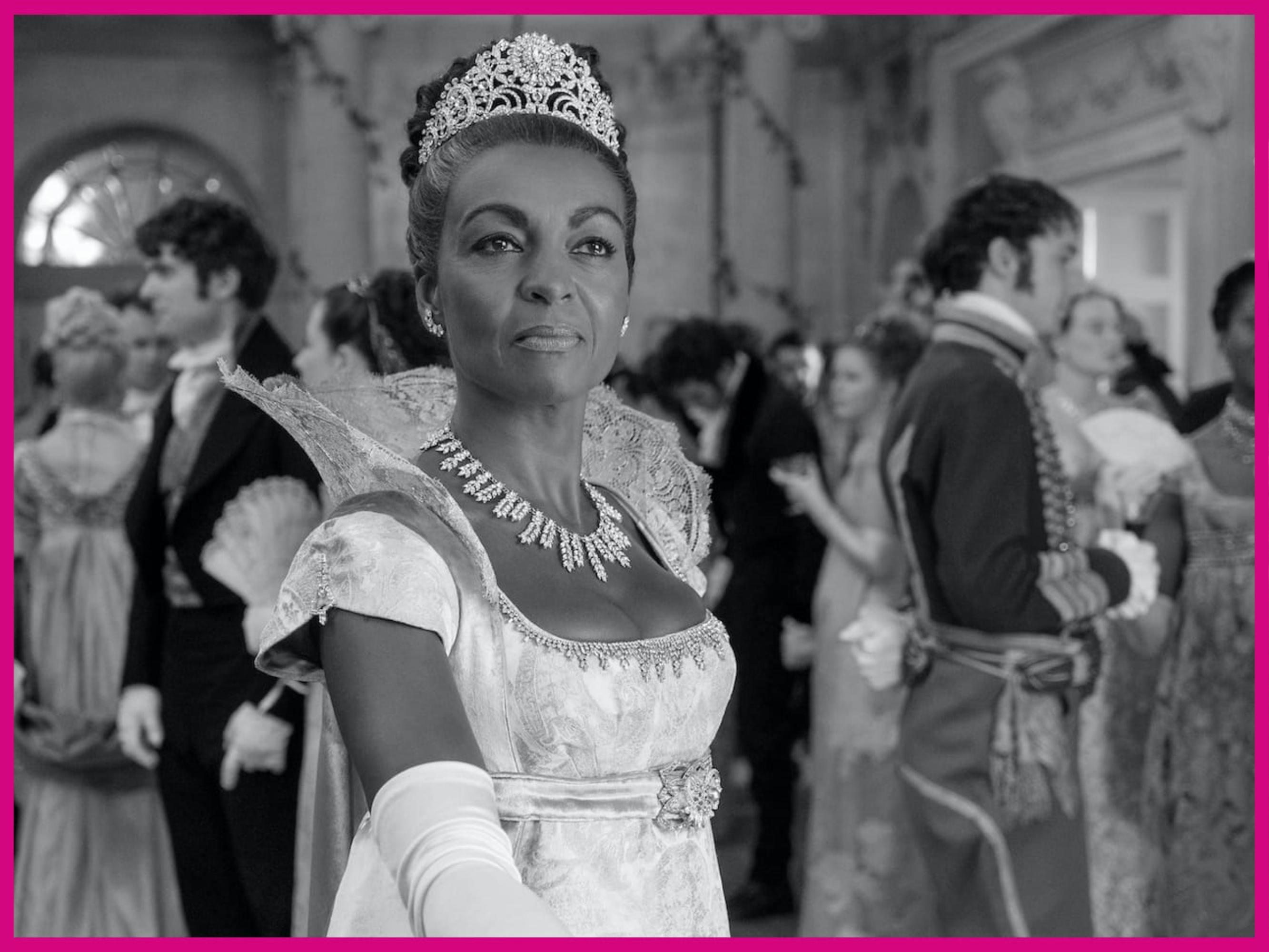
Lady Danbury (Adjoa Andoh)
Immediately, the energy shifts. Everyone else, it seems, has complaints about their own husbands, and the problems Daphne thought she was all alone with appear to be universal. Even though it’s a darker vision of her future — surely Daphne envisioned herself partying with her husband, not with a group of women who appear to hate theirs — the promise of camaraderie is enough to spark a glimmer of hope. Even if she and Simon never figure it out, she (and we) realizes that it’ll be okay because she has the support of a community of women experiencing something similar.
Lady Danbury and Queen Charlotte provide the various frameworks for Daphne to move through. First, there’s the queen’s vision of courtship, which relies on traditional values; then, there’s Danbury’s more nuanced understanding of what a marriage truly is. Both characters have an outsized impact on the journey of our protagonist, proving that while men might have power on paper, it’s the women who drive this story.
Along the way, Bridgerton posits that the characters’ varying degrees of experience depend largely on how they were raised. The Viscountess Bridgerton doesn’t prepare Daphne at all for what it actually means to have an intimate relationship. From the mechanics of sexual intercourse and birthing to — maybe more importantly — what we owe each other in a romantic relationship, Daphne is left clueless. She thus becomes the target of Daphne’s ire about how unprepared she finds herself, once married.
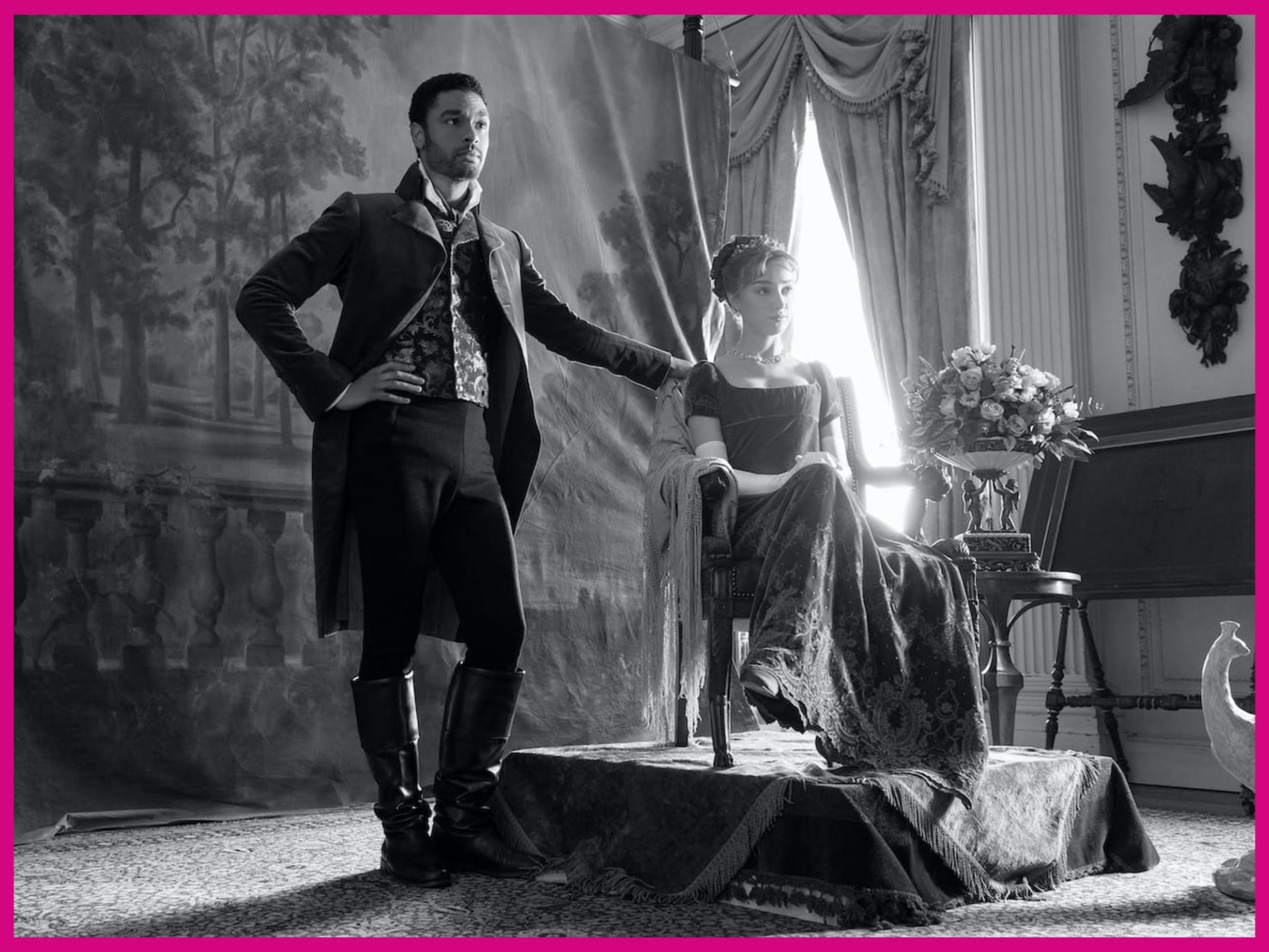
Simon Basset (Regé-Jean Page) and Daphne Bridgerton (Phoebe Dynevor)
Daphne’s mother does redeem herself by the end of the series, through advice that provides much-needed perspective about the emotional demands of marriage: that you have to choose to love your partner, every day. That delineation — between love as a passive act and love as an ongoing action — allows Daphne to realize she needs to put in a little more effort if she wants her duke to finally let loose inside her. And this time, when he does, she becomes pregnant.
And yet, placing the blame on Daphne’s mother for not having “The Talk” doesn’t account for the full story. In a time when women were traded for marriage like cattle, and where even the gentlest hump in a dark corner could mean the ruining of a woman’s perceived value, sex is something men know about and women are saved for; it’s hardly the stuff of romance. One has to wonder what Daphne’s mom herself knew going into marriage, and how that informed her understanding of her own role as a mother. She might not have had the words, or, more likely, there was so much shame around female sexuality that she was simply too embarrassed to discuss it.
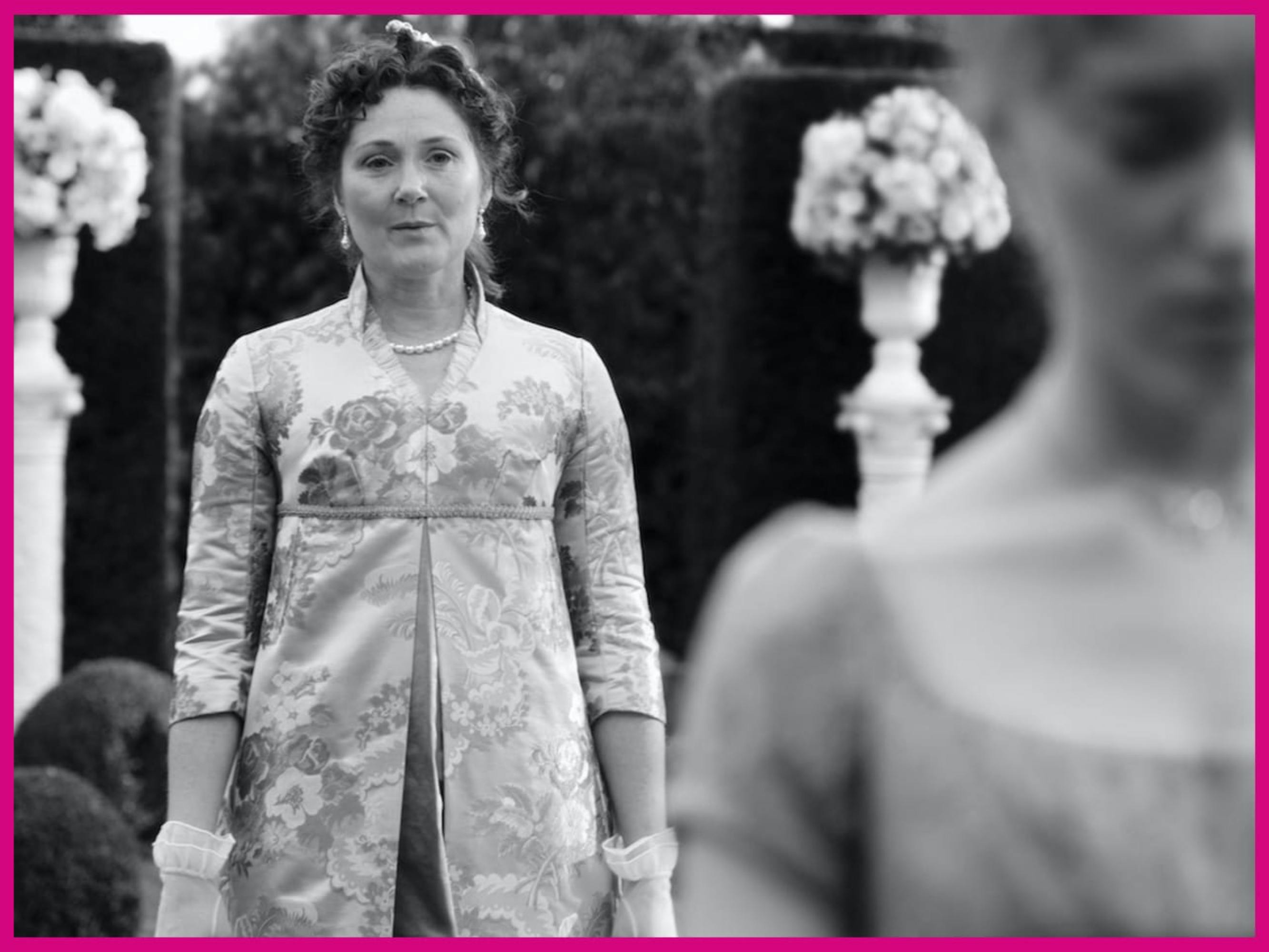
Lady Violet Bridgerton (Ruth Gemmell) and Daphne Bridgerton (Phoebe Dynevor)
But all “The Talks” in the world can’t really prepare you for what sex and love are really like. I had a mother who made it her mission to arm my two sisters and I with knowledge about intimate relationships, and yet all three of us walked away with hilarious misconceptions (I, for example, didn’t realize sex involved any sort of movement other than a one-and-done penetration, and one of my sisters said, when I texted her about this story, “I remember being really afraid of balls”). To be sure, that’s more info than poor Daphne had, but some things you just have to experience for yourself.
And when Daphne does experience sex, heartbreak, and all the confusing feelings in between, it changes her. The pain gives her the strength to not just stand up for herself but to show the person she loves that she loves all of him: flaws, lies, and all. This kind of assertive declaration couldn’t have come from the trembling Daphne we meet in the beginning.
As Lady Danbury quietly kicks everyone out of the party so that Daphne and Simon can be alone in the rain, we see a new Daphne: one whose idealism has been replaced by grit and who is ready for what it takes to make a marriage work. She’s still a woman in Regency England; she’s still her husband’s property. But in some way, the knowledge does set her free.
